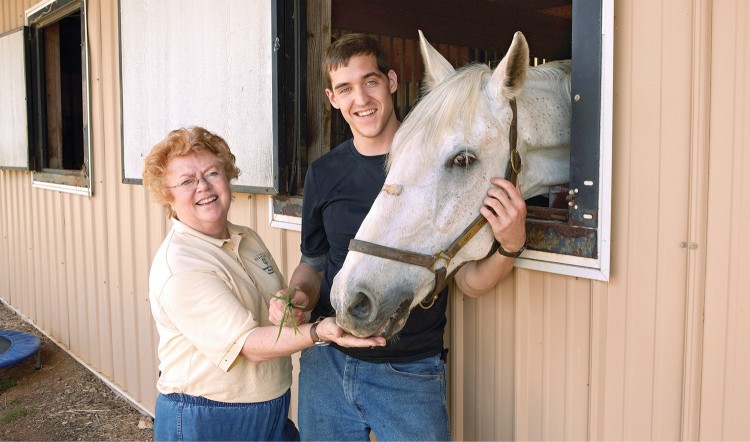
For millennia horses were an integral part of warfare. While they are no longer needed for battle, today they have a new purpose: helping to heal catastrophically wounded warriors.
Helen Tuel aids in their recovery by offering hippotherapy for wounded soldiers at her Therapeutic and Recreational Riding Center (TRRC) in Glenwood, Md. “In hippotherapy, the horse’s back becomes a catalyst and a moving platform for physical, occupational and speech therapy,” says Tuel.
Two years ago a local Veterans Affairs transitional housing facility began sending a handful of wounded soldiers to Tuel for part of their rehabilitation. Their injuries included severe burns, amputations and traumatic brain damage.
“One soldier with a traumatic brain injury now volunteers with our children’s program,” Tuel says. “It’s a win-win situation; he’s getting therapy and helping to give it.”
Thirty years ago Tuel began a therapeutic riding program with a borrowed pony and one child with Down syndrome because other riding schools would not accept children with disabilities. “I didn’t like the way people with disabilities were treated,” she says.
Armed with a master’s degree in health education from the University of Maryland, Tuel enrolled in a Vanderbilt distance-learning program in educational administration at Northern Virginia Community College. Summers were spent on Vanderbilt’s campus in Nashville.
“Vanderbilt was thinking outside the box, and they enabled me to do the same,” she says. “I was looking at the value of play in learning, and Vanderbilt let me take it to the next level.”
Today 35 trained, certified staff members treat about 200 children at the center’s 55-acre facility each week. The children have a range of physical, mental and emotional disabilities including cerebral palsy, spina bifida, muscular dystrophy, autism, ADHD, traumatic brain injury and cognitive disorders. The Professional Association of Therapeutic Horsemanship International (PATH) has given TRRC its highest rating: premier accredited center.
Therapists use the horses to supplement traditional therapies, working on their patients’ balance, posture, mobility, coordination and strength. By trying to keep their balance on horseback, the patients tone, stretch and strengthen muscles they would normally use in walking and sitting. In the process they often improve attention span, memory, concentration and speech. Through emotional connection with the horses, they develop confidence, patience and increased self-esteem.
Once patients have met their therapy goals, they transition to therapeutic riding. “This is not just a pony ride,” Tuel says. “The riders learn by caring for a large animal, reading its body language, and acquiring a new vocabulary. They have fun with a focus.”
Tuel also offers recreational riding for children and adults without disabilities in an inclusive environment. “It’s difficult to tell who has a disability when they’re on horseback,” she says. “We focus on what’s right about the person, not on what’s wrong.”
—JOANNE LAMPHERE BECKHAM
Learn more about the Therapeutic and Recreational Riding Center.